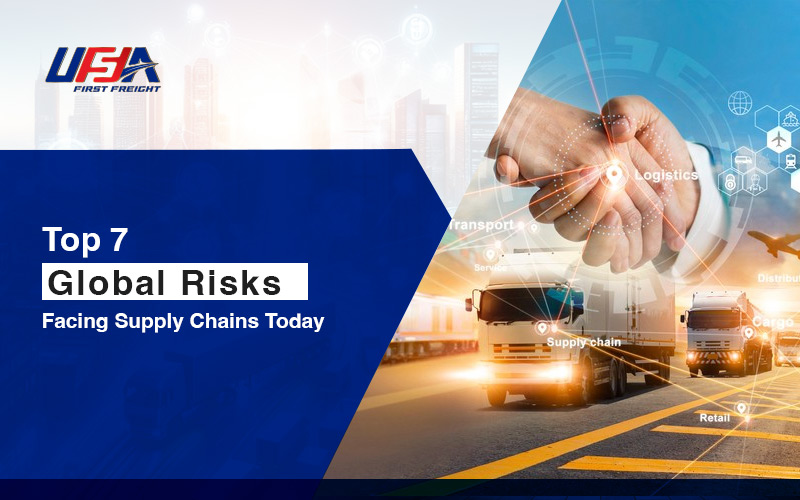The Global supply chain is facing huge risks, with disruptions in many sectors driven by various factors. These undeniable risks are becoming more universal in today’s unstable world, and here are 7 most critical threats:
1. Climate Change
Climate change means more frequent and strong occurrences of extreme weather, floods, and wildfires. These also bring about damage to roads, ports, and warehouses, leading to delays in shipping and high, unplanned costs. The new UN report shows that disasters caused by climate have risen five-fold in the last 50 years, strongly impacting logistics for all the world’s regions. Flooding in Europe and wildfires in the U.S. have lately disrupted supply lines across both regions and have cost millions in lost business.
2. Geopolitical Tension
Political conflicts are another major threat. The ongoing war between Russia and Ukraine has grossly impacted the free movement of commodities, such as grains and energy. The 70% importation of natural gas from Russia to Europe has weighed a blow on countries that use fuel-based products. Trade wars and sanctions between powerful countries, like the U.S.-China dispute, also create barriers to smooth international trade.
3. Cyberattacks
Cyber threats and data breaches seem to haunt modern supply chains. Cyberattacks increased by 50% in the logistics industry during 2023 compared with the previous year, as reported by a survey conducted by the World Economic Forum. In case of such attacks, the whole network of companies can be crippled. Operations and flows of goods across borders come to a halt.
4. Material Shortages
Material shortages have become a critical issue for industries depending on specific resources. The shortage of semiconductors that began in 2021 continues to plague the automobile and electronics industries, with full recovery unlikely until late 2024. The U.S. government has already spent $52 billion ramping up homegrown chip production through the CHIPS Act. However, the effects of the shortage are still being felt, leading to production delays and higher costs for businesses.
5. Labour Shortages
Labor shortages, especially in the transportation and logistics sectors, have further strained supply chains. According to the International Road Transport Union, there are currently shortages of 2.6 million truck drivers globally. This has greatly delayed deliveries to the ports and created large backlogs in some firms’ supply chains. This shortage further pushes the finance of companies largely dependent on transport, hence encouraging companies to invest in automation and better working conditions.
6. Energy Market Instability
Global energy prices have experienced unprecedented spikes lately due to geopolitical factors. It was the Russia-Ukraine conflict that pushed oil above the $100 threshold in 2022, making freight and production very expensive. These high energy prices force companies to seek alternative sources of energy and to explore renewable options to depend less on their fossil counterparts.
7. Technological Disruptions
While technology is at the heart of supply chain efficiency, it also brings new risks in its wake. An automated system malfunction at a few key logistics hubs in 2023 resulted in week-long delays in shipments across the globe. As businesses keep investing in AI and automation systems, it becomes essential that such systems be reliable and have contingency plans in place. The growing use of technology has highlighted the importance of balancing innovation with operational stability.
Conclusion
The global supply chain is facing complex risks that require businesses to be more agile and prepared for future disruptions. Climate change, geopolitical tensions, cyberattacks, and labor shortages all pose huge threats.
Logistic companies should invest in resilient strategies and technologies to remain competitive. By staying ahead of these challenges, businesses can navigate the ever-changing global landscape and reduce any disruptions to their supply chain.
